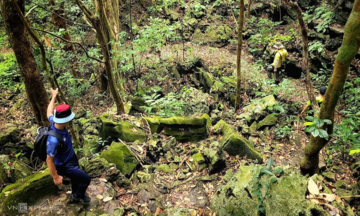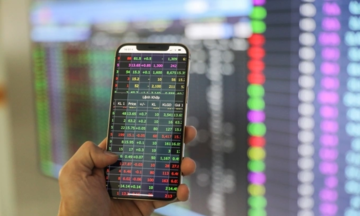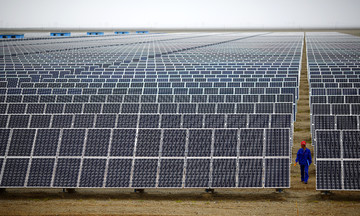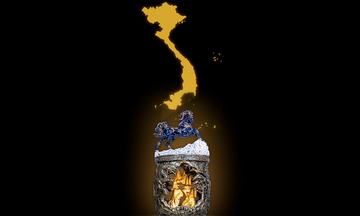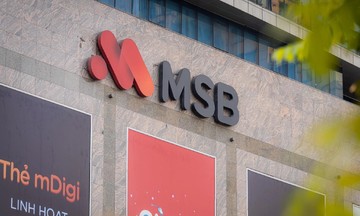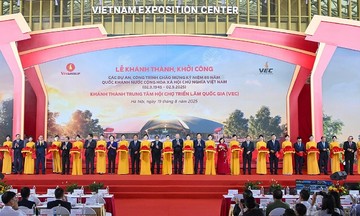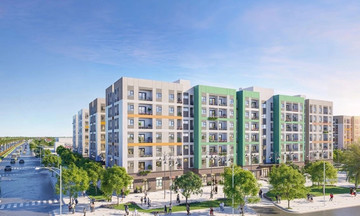In the past two years, green building has become increasingly popular in Vietnam, creating a positive shift in the awareness and actions of investors seeking sustainable solutions for the construction industry. Currently, Vietnam has 559 certified green buildings, with a total floor area of 13.6 million m2. This achievement surpasses the target set in Decision 280/QD-TTg by the Prime Minister, which aimed for 80 green buildings by 2025 and 150 by 2030.
According to experts, to meet green building standards in Vietnam, businesses need to select construction materials that are safe for users and comply with regulations. In daily living and working spaces, indoor air quality (IAQ) plays a vital role in human health, as it accounts for most of the directly contacted materials. However, many materials on the market still pose potential safety risks, emitting harmful compounds such as formaldehyde, VOCs, and asbestos.
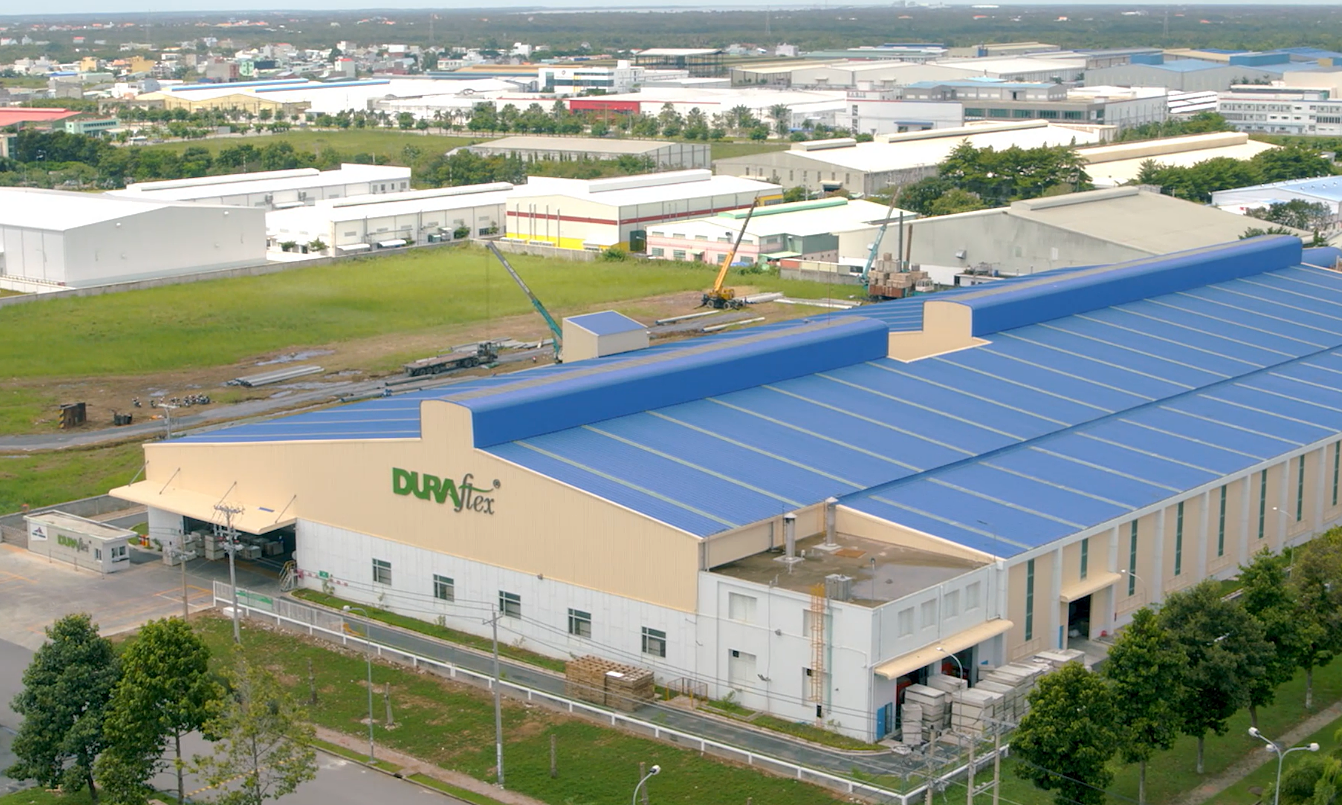 |
Saint-Gobain's Duraflex fiber cement board factory in Vietnam. Photo: Saint-Gobain |
Saint-Gobain's Duraflex fiber cement board factory in Vietnam. Photo: Saint-Gobain
Given the growing demand for green buildings, Saint-Gobain, a building materials group with a history of more than 360 years, is becoming a partner for many investors in Vietnam. The company operates in over 75 countries and is among the top 100 global industrial groups and top 100 innovative companies. Throughout its operations, the company continuously invests in research and product development.
In Vietnam, Saint-Gobain provides products, technical advice, and support to investors and architects to achieve green building certifications such as EDGE, LEED, or Green Mark. Many of the group's key products are used in over 13 million m2 of green building floor area, including: Vinh Tuong-Gyproc gypsum boards, Duraflex Low-Carbon fiber cement boards, Isover thermal insulation glass wool, and Weber tile adhesives and grouts.
Nguyen Truong Hai, CEO of Saint-Gobain Vietnam, stated that sustainability is always central to all product development decisions and business strategies. "We strive to provide safe, environmentally friendly, and highly applicable construction solutions to improve the quality of life for the community," Hai said.
Most of Saint-Gobain's products are manufactured in Vietnam, adhering to low VOC emission standards. The company also applies life cycle assessment (LCA), a method for comprehensively measuring environmental impacts from raw materials to end-of-life disposal. Data from LCA serves as a benchmark for developing environmental product declarations (EPDs), ensuring compliance with green standards recognized by reputable international organizations.
Demonstrating its commitment to sustainability, Saint-Gobain continuously improves its products based on environmental friendliness and health safety criteria. One notable product is the new generation Vinh Tuong-Gyproc gypsum board, which has been tested to be formaldehyde-free, contributing to improved indoor air quality. In March, the company was included in the national standard TCVN 13521:2022, with almost its entire product portfolio meeting low VOC emission requirements, contributing to higher safety standards in construction. Among these, the Duraflex Low-Carbon fiber cement board, entirely produced in Vietnam, utilizes asbestos-free cellulose fiber technology and limits harmful volatile organic compounds and heavy metals.
Saint-Gobain has operated in Vietnam since 1991 and has built a system of 9 factories nationwide. Its product lines range from fiber cement boards, gypsum ceilings and partitions, gypsum boards, to cladding and waterproofing products. The factory system has a total capacity of about 100,000 tons of materials per year, equivalent to over 500 million m2 of products, distributed through more than 2,000 points of sale. According to the company, these figures demonstrate the ability to transfer advanced technology, enhance confidence in domestic production, create jobs, and promote sustainable economic development.
In production, since 2017, Saint-Gobain has reduced carbon in its products by 60%, treated and reused all industrial wastewater, preventing any discharge into the environment. The factories have also increased the use of renewable energy, installed solar power, and recovered and recycled production materials such as pallets and gypsum waste.
In transportation, the company has implemented an optimized transportation model by consolidating goods and delivering them directly to the distribution system, instead of using small-scale transportation. This solution has reduced over 2,000 tons of CO2 emissions in the supply chain in just two years, while also reducing operating costs for partners.
Beyond products, the commitment to green materials is also demonstrated through notable projects involving Saint-Gobain. An example is the Lego factory, Lego's first Net Zero project in Vietnam, which uses solutions such as fire-resistant gypsum walls and ceilings, and ventilation duct insulation using Isover glass wool. Similarly, the Daikin Vietnam factory, which achieved LEED Platinum certification, also chose Saint-Gobain as a partner to supply green materials throughout the project.
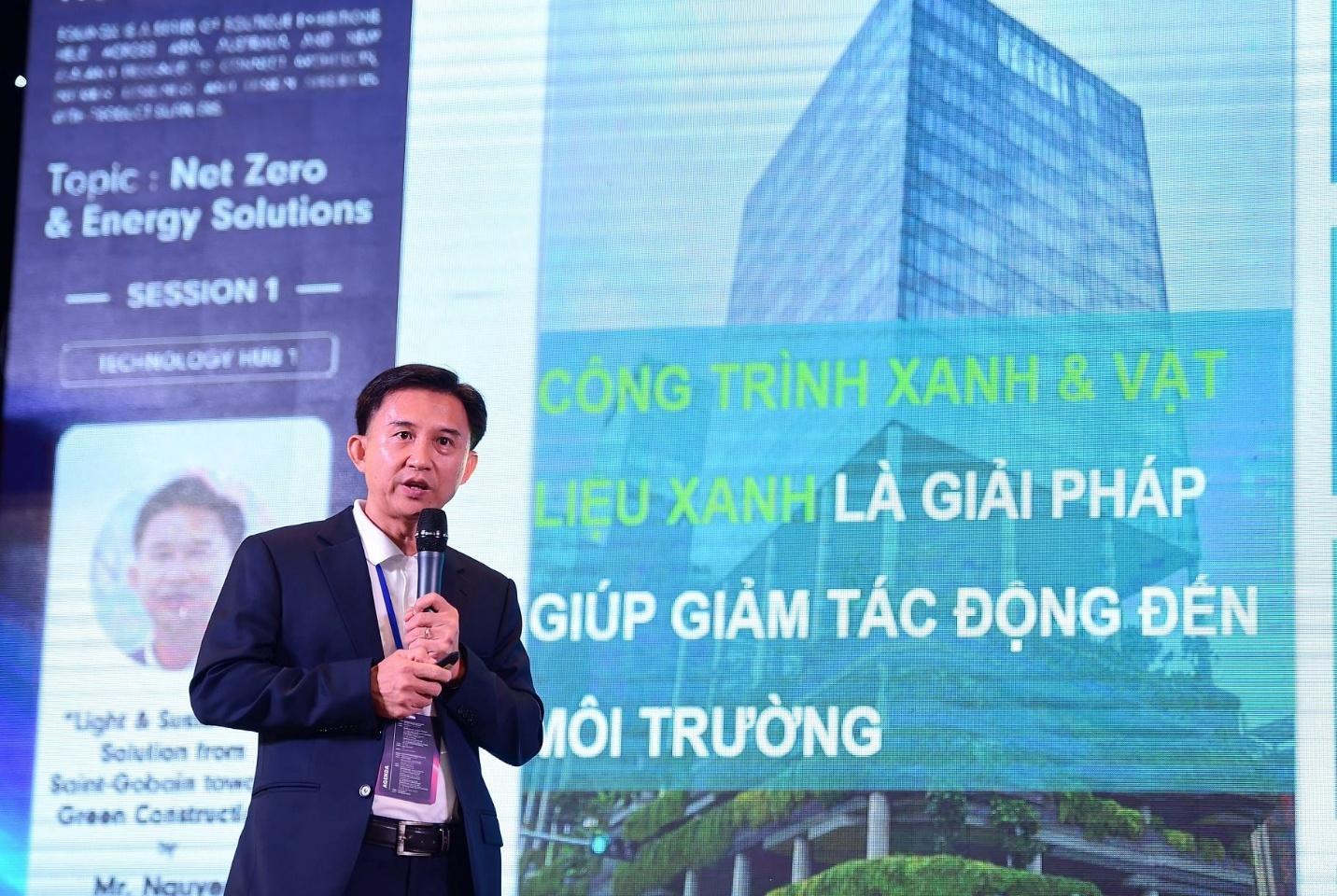 |
Nguyen Truong Hai, CEO of Saint-Gobain Vietnam. Photo: Saint-Gobain |
Nguyen Truong Hai, CEO of Saint-Gobain Vietnam. Photo: Saint-Gobain
In the Asia-Pacific region, Saint-Gobain promotes sustainable building material initiatives and collaborates with governments and organizations to spread the value of green buildings. In Vietnam, the company also participates in prestigious architectural programs like the Top 10 Awards to raise public awareness.
Nguyen Truong Hai said the company is inheriting the group's global vision, aiming to become the world's leading supplier of lightweight and sustainable building materials. According to Hai, Saint-Gobain Vietnam is committed to innovation and collaborating with investors, general contractors, and architects to expand the number of green buildings and promote material recycling programs to achieve emission reduction targets.
Hoang Dan



